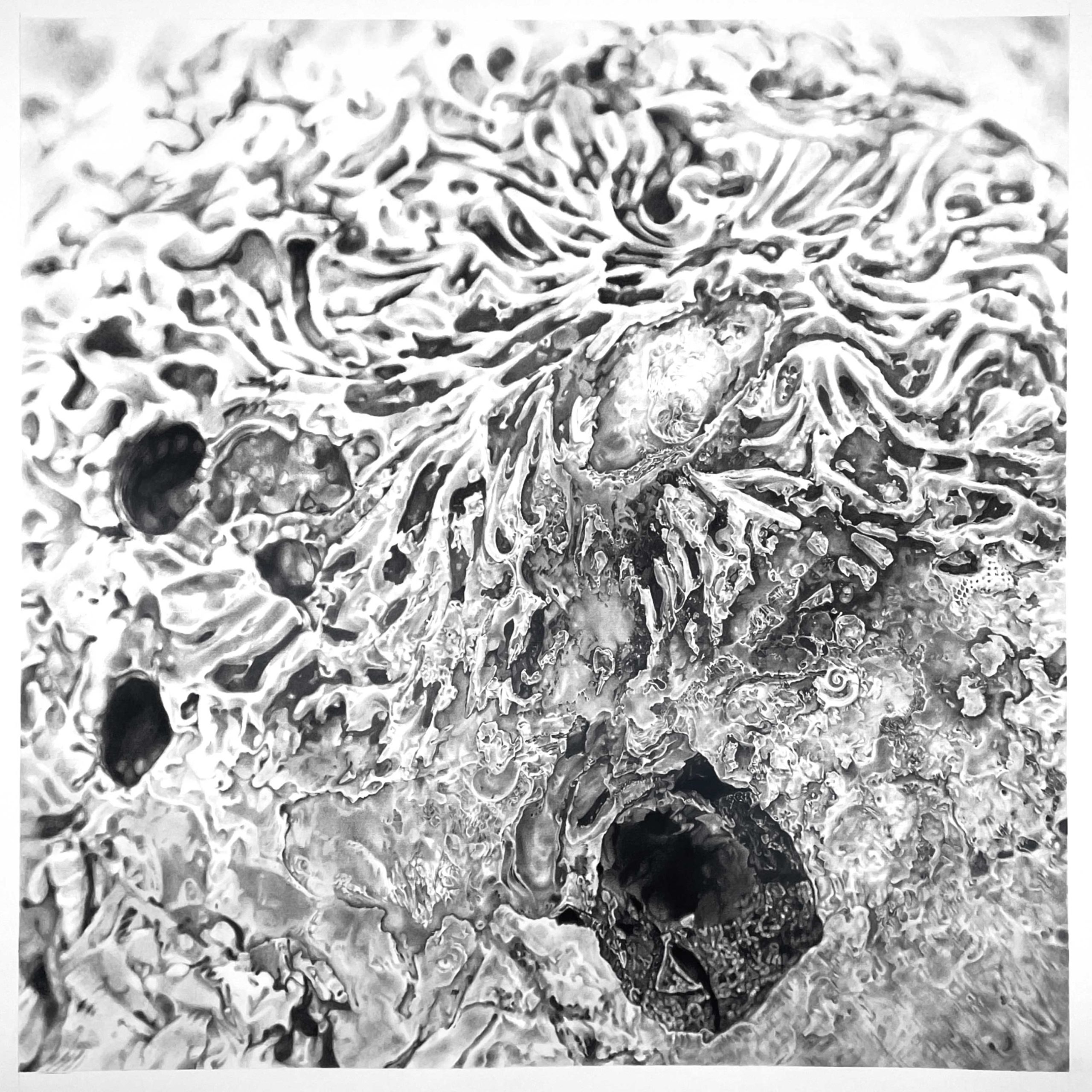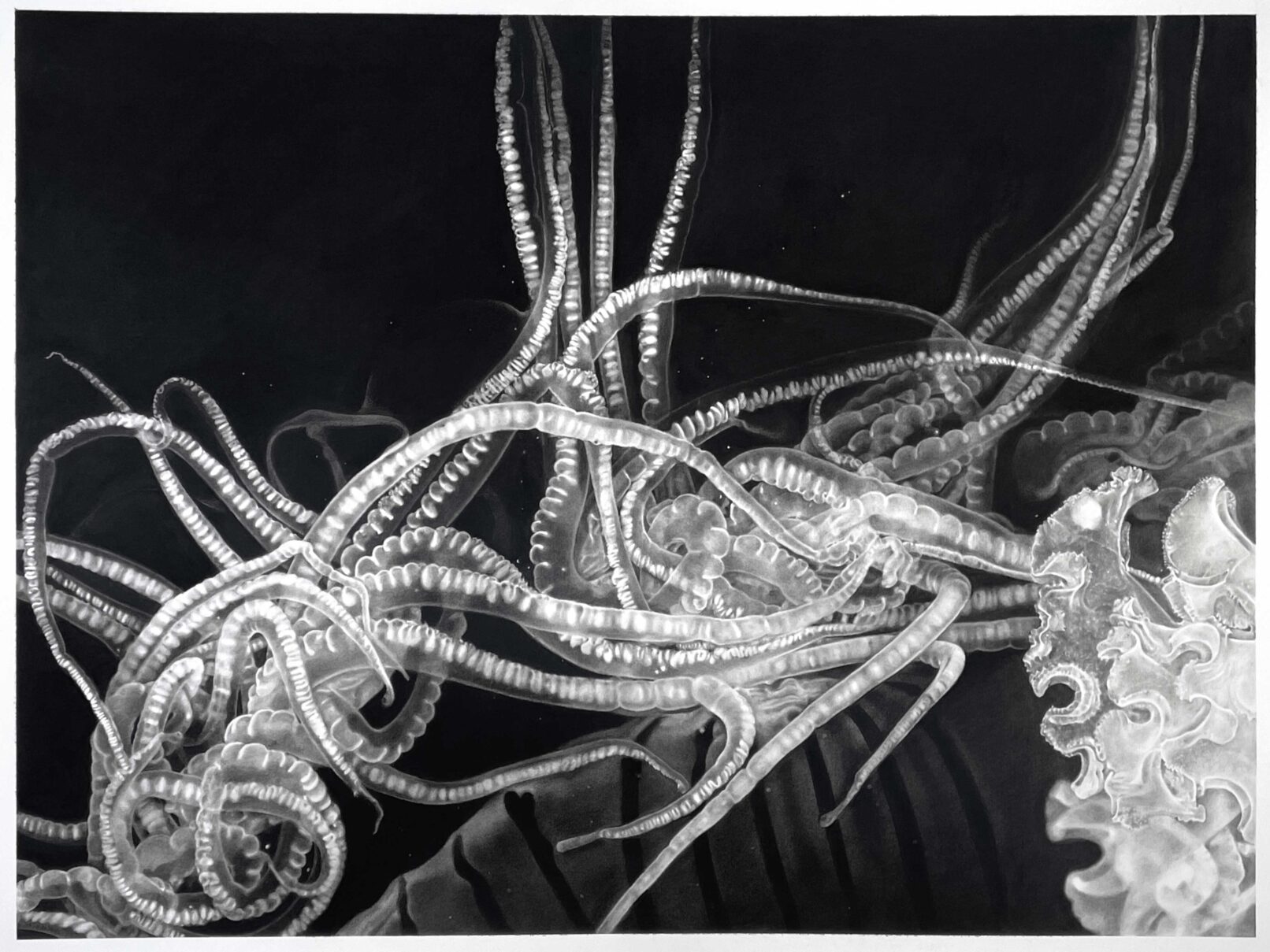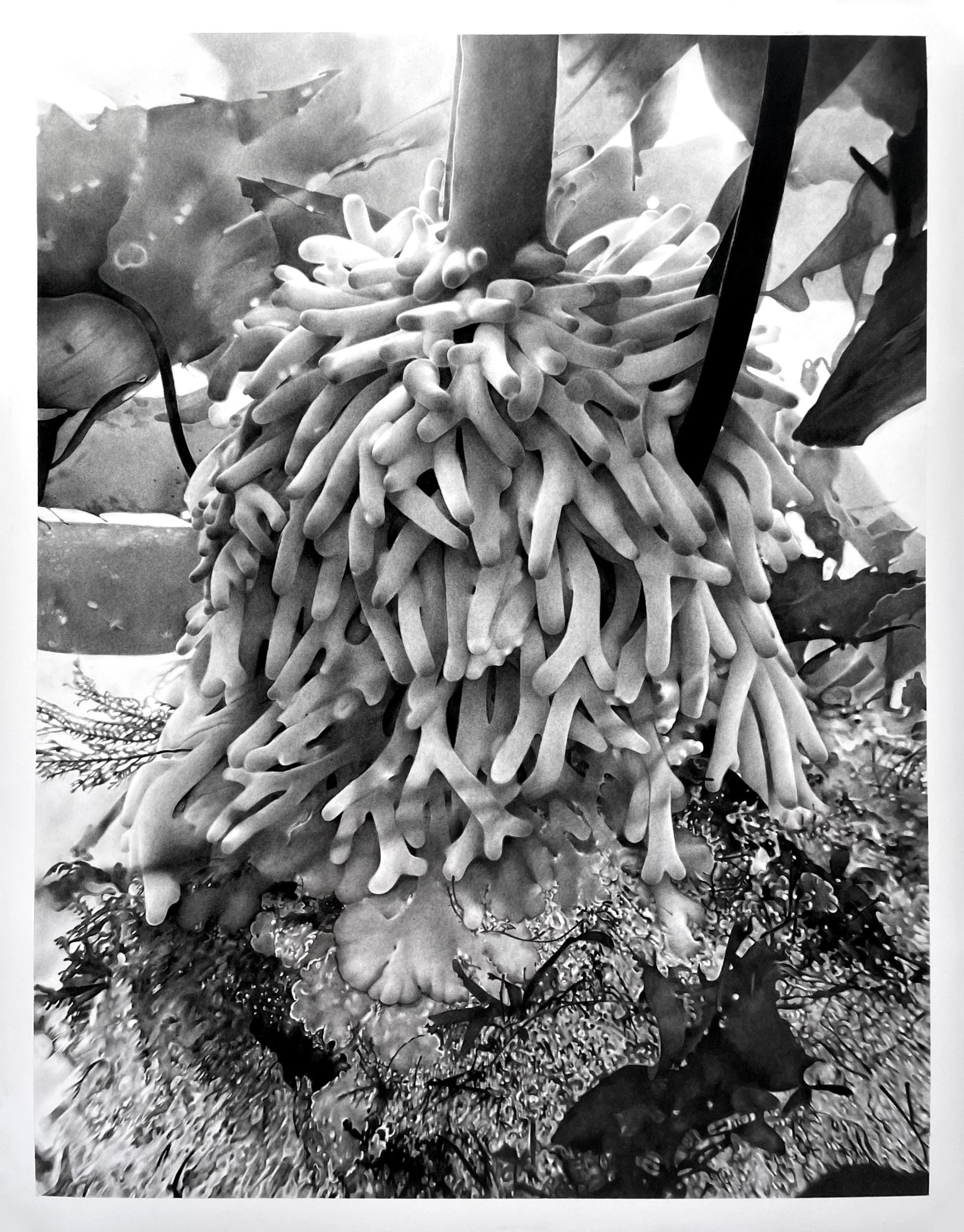Hold Fast, 2019-ongoing
This series of detailed charcoal drawings explores some of the species impacted by the decline of more than 95% of Northern California’s kelp forests between 2008 and 2019. The collapse of the kelp forests occurred as a combined result of climate change induced ocean warming affecting the growth of kelp, and a marine epidemic affecting sea stars which triggered a cascade of events leading to the proliferation of purple urchins that devoured much of the surviving kelp. The project asks the viewer to take a closer, slower, and stranger look at some of the key non-human actors affecting and affected by this dramatic ecological transformation. It explores the idea that before we can steward with integrity and wisdom we first need to enter into an intimate, non-judgmental, and witnessing relationship with the space and species we are working with.

Charcoal on paper
40" x 40"
The interior of the shell of the largest abalone ever found. Abalone, whose main food is kelp, have suffered greatly from the collapse of Northern California’s kelp forests. Their populations have also been impacted by withering syndrome, a lethal disease exacerbated by increasing ocean temperatures.

Charcoal on paper
46" x 35.5"
This drawing shows the underside of a purple sea urchin, the species that is razing the kelp forests along the Pacific Coast. Once the urchin run out of kelp to eat, they enter a zombie-like state, blanketing the ocean floor in “urchin barrens” that are tenaciously stable once established.

Charcoal on paper
40" x 40"
This drawing shows a close-up of the rugged exterior of an abalone shell that I found amongst a large pile of abalone shells in a hidden cove in Mendocino, CA. It was very likely a shell discard pile for abalone poachers. Large abalone can fetch hundreds of dollars each on the black market.

Charcoal on paper
46" x 35.5"
This drawing shows a jellyfish and is based on a photo I took in Gerstle Cove in Sonoma, CA. Previously one of my favorite diving spots because of its diverse and teeming kelp forest, the cove, at the time this photo was taken, had been almost entirely taken over by urchins.

Charcoal on paper
35.5" x 46"
The holdfast is the part of the bull kelp that anchors it to a substrate. A climate change-induced population explosion of kelp-eating sea urchin, have meant that many holdfasts, which usually survive year-round allowing quick regrowth, have been eaten down, impairing annual regrowth and resilience.
